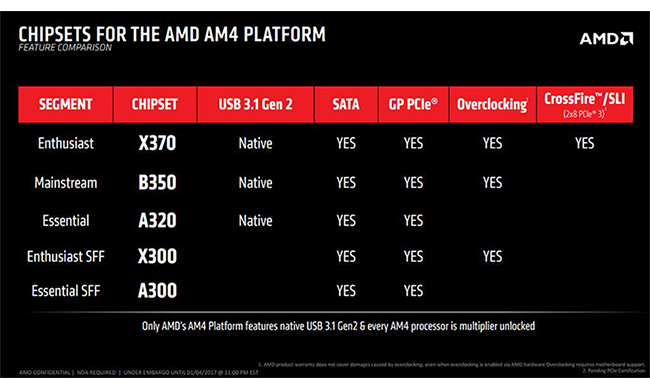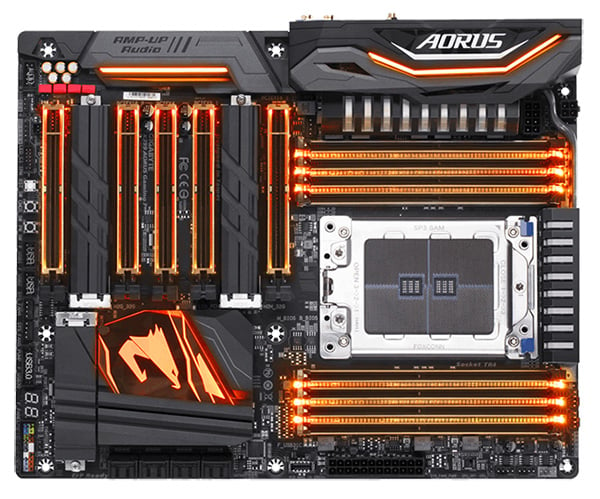Our Aim
To provide you with an overview on New And existing technologies, hopefully helping you understand the changes in the technology. Together with the overviews we hope to bring topical issues to light from a series of independent reviewers saving you the time And hassle of fact finding over the web.
We will over time provide you with quality content which you can browse and subscribe to at your leisure.
TekSpek 's

AMD Ryzen Chipset
Date issued:
AMD made waves in the premium consumer CPU market during March 2017 when it debuted Ryzen processors based on the Zen architecture that had been in development for the previous four years. Offering excellent multi-threaded performance allied to aggressive pricing, Ryzen chips offered the power user the best bang for the buck.
An all-new processor design, built from the ground up, required a new supporting raft of motherboards. Sensibly so, because trying to keep compatibility with older generations would have stifled Ryzen performance.
Together with the processors these Ryzen-supporting motherboards constitute the AM4 platform. As of November 2017, AMD supports Ryzen CPUs via five chipsets, shown below.

The X370 is the chipset that will interest most enthusiasts who want to get the last bit of performance from their system. AMD isn't tied to legacy hardware so has had ample time to ensure that X370 is a thoroughly modern chipset capable for today and tomorrow.
In particular, it supports the latest USB 3.1 Gen 2 protocol through two ports, enabling transfer speeds of up to 10Gbps from compliant devices. It is to be noted that Intel's Z370 platform, arriving to market in October 2017, does not support USB 3.1 Gen 2 directly - motherboards based on that chipset require additional controllers that inevitably add expense.
There's a further six USB 3.1 Gen 1 (5Gbps) ports and another six USB 2.0, meaning that a well-stocked X370 can have up to 14 active USB ports of varying flavours and speeds. The chipset also features six Sata 6Gbps ports, eight PCIe Gen 2 lanes for additional connectivity over and above the 20 usable lanes present on Ryzen CPUs, and ability to run multiple cards in either CrossFire or SLI.
X370 motherboards are available from all the usual players, meaning Asus, MSI, Gigabyte, ASRock, etc., and start at around £110.
For those that can't quite stretch to the full-featured X370, the B350 is a fine choice, especially if paired with a mid-range Ryzen CPU. B350 keeps the same USB complement but reduces Sata ports to four, additional PCIe Gen 2 lanes to six, and doesn't cater for SLI when housing multi-GPU setups. Though appreciating that all Ryzen processors are unlocked, the chipset does allow full-on overclocking.
B350 boards start at a more palatable £75 and are available in multiple form factors, so there's likely a board for Mini ITX, Micro ATX and full ATX sizes. Such moves open up Ryzen for mainstream PC usage.
The A320 boards are the cheapest of the primary bunch. They still feature USB 3.1 Gen 2, albeit just one port, but further hamper expansion by reducing PCIe Gen 2 lanes to four. As one would expect, there's no facility for dual graphics and, understanding the market they are likely to be deployed in, there is no overclocking potential.
A320 boards, like their B350 cousins, are offered in myriad form factors. Expect to pay £45 for the cheapest, rising to £70 for the premier offerings.
The small-form-factor derivatives, X300 and A300, reduce the capabilities present in the full-size brethren but fit it into a smaller space. Most notably, there is no inherent USB 3.1 Gen 2 support and limited Sata provision. Manufacturers have been slower to take these boards up, however.
Ryzen Threadripper - the most feature-rich consumer chipset ever
AMD has also released a collection of processors aimed at the truly high-end desktop market. These are known by the Ryzen Threadripper name and, in the case of the 1950X, feature 16 cores and 32 threads for incredible multi-tasking performance. The requirement for more performance and I/O capability means that Ryzen Threadripper processors use a different socket known as TR4. Motherboards based on this chipset are referred to as X399, and boy do they pack a punch.
Ryzen Chipsets: X399 vs. X370 |
|||||||
|---|---|---|---|---|---|---|---|
| Chipset | Socket | USB 3.1 Gen 2 | USB 2 + 3 | SATA | CrossFire / SLI | Memory Channels | PCI e Lanes |
| X399 | TR4 | Native, 2 ports | 20 | 12 | 3 x16 + 1 x8 2 x16 + 3 x8 1 x16 + 5 x8 |
Quad DDR4 | 60 G3 8 G2 |
| X370 | AM4 | Native, 2 ports | 14 | 10 | 1 x16 2 x8 |
Dual DDR4 | 20 G3 8 G2 |
A peek at X399 vs. X370 shows just how much more there is of everything. There's still only two USB 3.1 Gen 2 ports but the total USB count is ballooned to 22. The real purpose of X399 is to offer unmitigated connectivity for various high-speed devices. To this end, X399 has an incredible (usable) 60 PCIe Gen 3 lanes, eight PCIe Gen 2, thus enabling eclectic choices when connecting up graphics cards and SSDs. There is no consumer chipset that can rival X399 for its connectivity and storage potential.

A fully-loaded X399 motherboard certainly looks the part
Stacked the gills with expansion, AMD's X399 is the way to go if you want top-tier CPU performance and ability to add an amazing array of graphics cards and SSDs. This no-compromise approach does mean that X399 boards aren't cheap, so expect to pay from £275 for the privilege of owning one. As always, Scan Computers retails a wide range of Ryzen and Ryzen Threadripper motherboards.